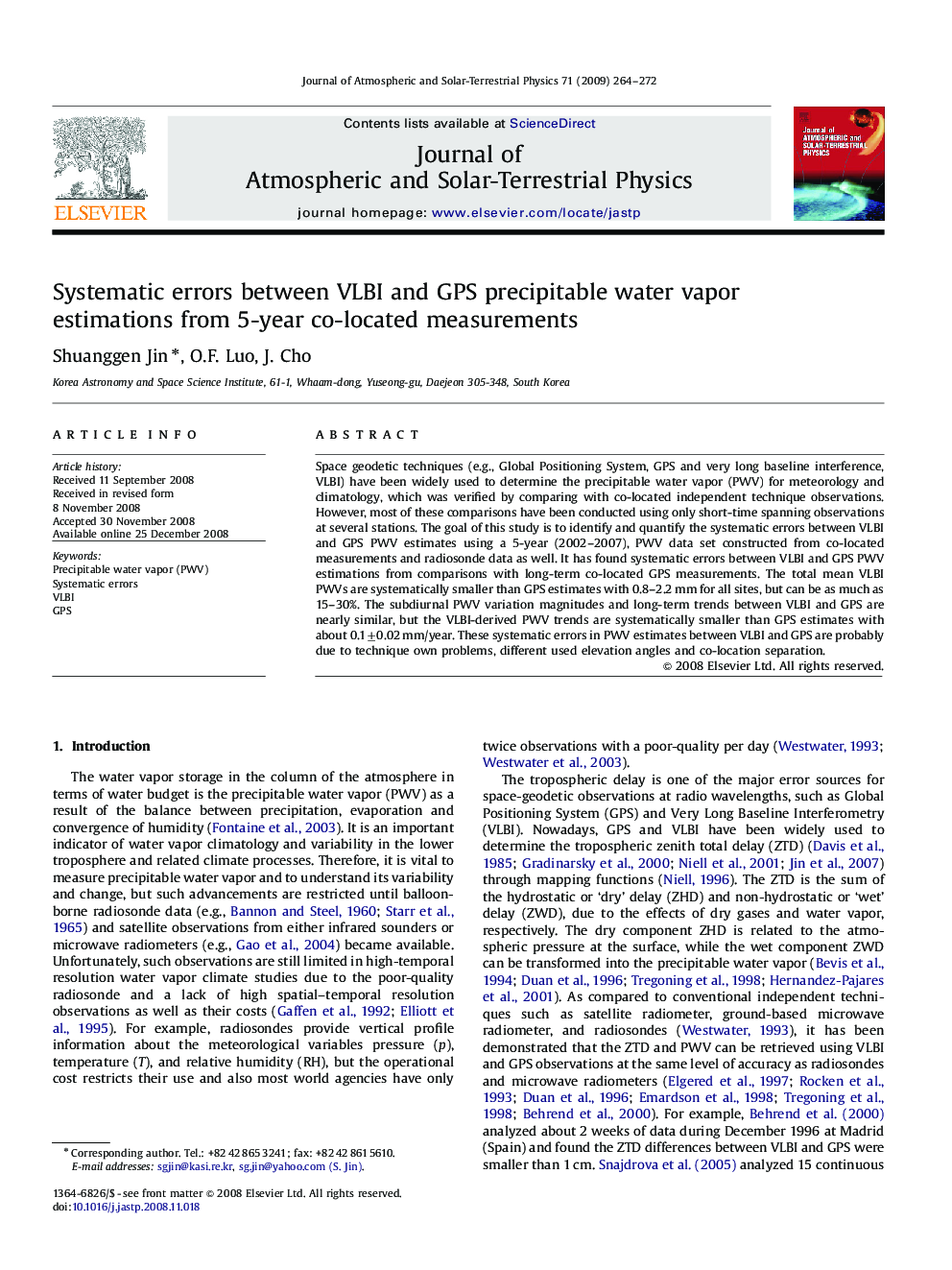| کد مقاله | کد نشریه | سال انتشار | مقاله انگلیسی | نسخه تمام متن |
|---|---|---|---|---|
| 1777324 | 1021736 | 2009 | 9 صفحه PDF | دانلود رایگان |

Space geodetic techniques (e.g., Global Positioning System, GPS and very long baseline interference, VLBI) have been widely used to determine the precipitable water vapor (PWV) for meteorology and climatology, which was verified by comparing with co-located independent technique observations. However, most of these comparisons have been conducted using only short-time spanning observations at several stations. The goal of this study is to identify and quantify the systematic errors between VLBI and GPS PWV estimates using a 5-year (2002–2007), PWV data set constructed from co-located measurements and radiosonde data as well. It has found systematic errors between VLBI and GPS PWV estimations from comparisons with long-term co-located GPS measurements. The total mean VLBI PWVs are systematically smaller than GPS estimates with 0.8–2.2 mm for all sites, but can be as much as 15–30%. The subdiurnal PWV variation magnitudes and long-term trends between VLBI and GPS are nearly similar, but the VLBI-derived PWV trends are systematically smaller than GPS estimates with about 0.1±0.02 mm/year. These systematic errors in PWV estimates between VLBI and GPS are probably due to technique own problems, different used elevation angles and co-location separation.
Journal: Journal of Atmospheric and Solar-Terrestrial Physics - Volume 71, Issue 2, February 2009, Pages 264–272